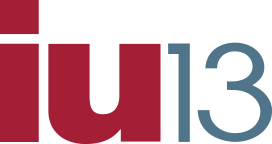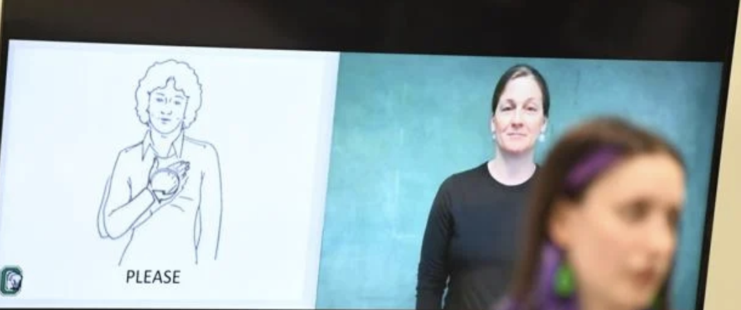Cocalico School District earns national recognition for student American Sign Language group
Cocalico High School’s students didn’t set out to win an award when they started a program teaching and learning American Sign Language last year. The ASL Learning Community was born from a desire to connect with their fellow students, those who can’t speak or hear.
“It was important for all of us to be able to connect with communities better,” said Sophia Gervase, a senior who helped start the program in the 2023-24 school year.
The student-driven initiative earned the Cocalico School District national recognition as one of only seven districts picked from more than 300 applicants nationwide to receive the District Administration Leadership Institute District of Distinction Award – and the only one of those seven to be honored under the award’s special programming category. The institute is a prekindergarten through grade 12 membership organization offering advice and resources to district leaders.
District Superintendent Ella Musser accepted the award on the district’s behalf at a ceremony in December. She presented the award to the ASL Learning Community on Jan. 30.
The institute considers “the entire (kindergarten through grade 12) program and says if we have students who are taking care of their fellow students in this way, that says something about the community, the teachers all throughout your time here and the values that we foster,” Musser said when presenting the award Jan. 30.
District of Distinction
Cocalico’s ASL Learning Community was highlighted for its plan to establish positive communication and interaction with the three students in the Lancaster-Lebanon Intermediate Unit 13 deaf and hard of hearing class at Cocalico High School.
“It’s definitely very surprising,” Madison Zepp, a senior who helped start the ASL Learning Community, said of the award. “It’s really nice to be able to involve our community and to be able to involve the deaf students in our school. It’s really nice that, through this program, we’ve been able to grow our community and become closer.”
Zepp and Gervase are two of several students approached by high school librarian, Ginger Mickey, to start the program last year. Through resources provided by the Oklahoma School for the Deaf, a group of roughly 30 students has been learning ASL, about deaf culture and the differences in how signs are perceived across the world.
The Oklahoma School for the Deaf is a public residential kindergarten through grade 12 school for deaf and hard of hearing students ages 2 to 18.
“Once I approached (the students), it became their thing,” Mickey said. “But I’m real big here in the library about making sure that everybody feels safe, secure and valued. So knowing that we had a group of students who may not be able to communicate, I thought it was important that we had kids who were interested in trying to communicate.”
‘We can all just talk’
Sophomore Sunna Ruhl joined the program last year and has taken the lead this year on efforts to connect with deaf and hard of hearing students in the school. As a group leader, Ruhl also leads ASL lessons with her fellow classmates.
“I feel like sign language is honestly almost overlooked,” Ruhl said. “And there’s so many deaf people
Mickey said the timing of the ASL Learning Community’s meetings, at 2 p.m., often conflicts with the schedules of students in the IU13 class, which dismisses around 2:15 p.m., but she’s arranged a group get-together at the end of the year.
The upcoming get-together has stirred both feelings of apprehension and excitement for the three students in the IU13 deaf and hard of hearing class, said its teacher, S.J. Popiel. While the students still receive their education within Cocalico High School, they spend most of their time with each other, learning their core subjects in the IU13 class.
Popiel said the courses a deaf or hard of hearing student takes as part of the IU13 class versus those they take with their hearing peers in the general education setting varies based on a student’s individualized education plan, or IEP. An IEP ensures a child with an identified disability receives the proper services in an educational setting.
This year, the three students in Popiel’s class only take two elective courses with their peers in the general education settings.
Generally their apprehensions on the end of year gathering stem from a fear of communication breakdowns and awkwardness in navigating between two languages and cultures, Popiel said.
However, one student in the IU13 class, freshman Aamahnie Vogel, said she’s “very happy and excited to see kids here learning to sign.”
Students in the ASL Learning Community have been learning to sign during the high school’s “focus” periods, which are reserved at the end of the day for study and homework time, and after school on Thursdays. Some spend a few hours a week learning outside of school, too.
Beginning in the 2025-26 school year, students will have the opportunity to learn ASL for high school credits. Mickey and the students arranged to add an ASL online elective course to the high school’s course catalog. The course will be available to juniors and seniors through the district’s online learning program, Cocalico Connections.
Either a Cocalico-employed faculty member or online teacher supplied through the online vendor for Cocalico Connections will serve as the “teacher of record” responsible for evaluating and grading students.
The teacher of record must have a teacher certification in ASL, which didn’t exist in Pennsylvania until 2022. Mickey said she is thinking of going back to school to become certified in ASL.
While the seniors who started the program will miss out on taking the course for credit, sophomore Sydney Campbell, who is a group leader with Ruhl, plans not only to take the course but convince her friends to do so as well.
“I want to help other people… so we can all just communicate, so we can all feel like ‘hey we’re just normal high school kids, that way we can all just talk’,” Campbell said.







